Python, with its robust frameworks and libraries, stands at the forefront of this AI revolution, offering tools that make powerful AI technologies accessible to companies of all sizes. Neural networks, inspired by the human brain, help businesses to process complex data and extract meaningful insights that drive strategic decisions. For instance, online retailers are using these technologies to recommend products personalized to individual customer preferences, significantly enhancing the shopping experience and boosting sales.
Financial institutions now use AI programming with python neural networks to predict stock market trends and identify investment opportunities, showcasing the technology’s capability to not only respond to current data but also anticipate future events. This level of predictive power is enabling businesses to stay ahead in competitive markets, optimize operations, and deliver services that meet the dynamic needs of their customers.
Understanding Neural Networks
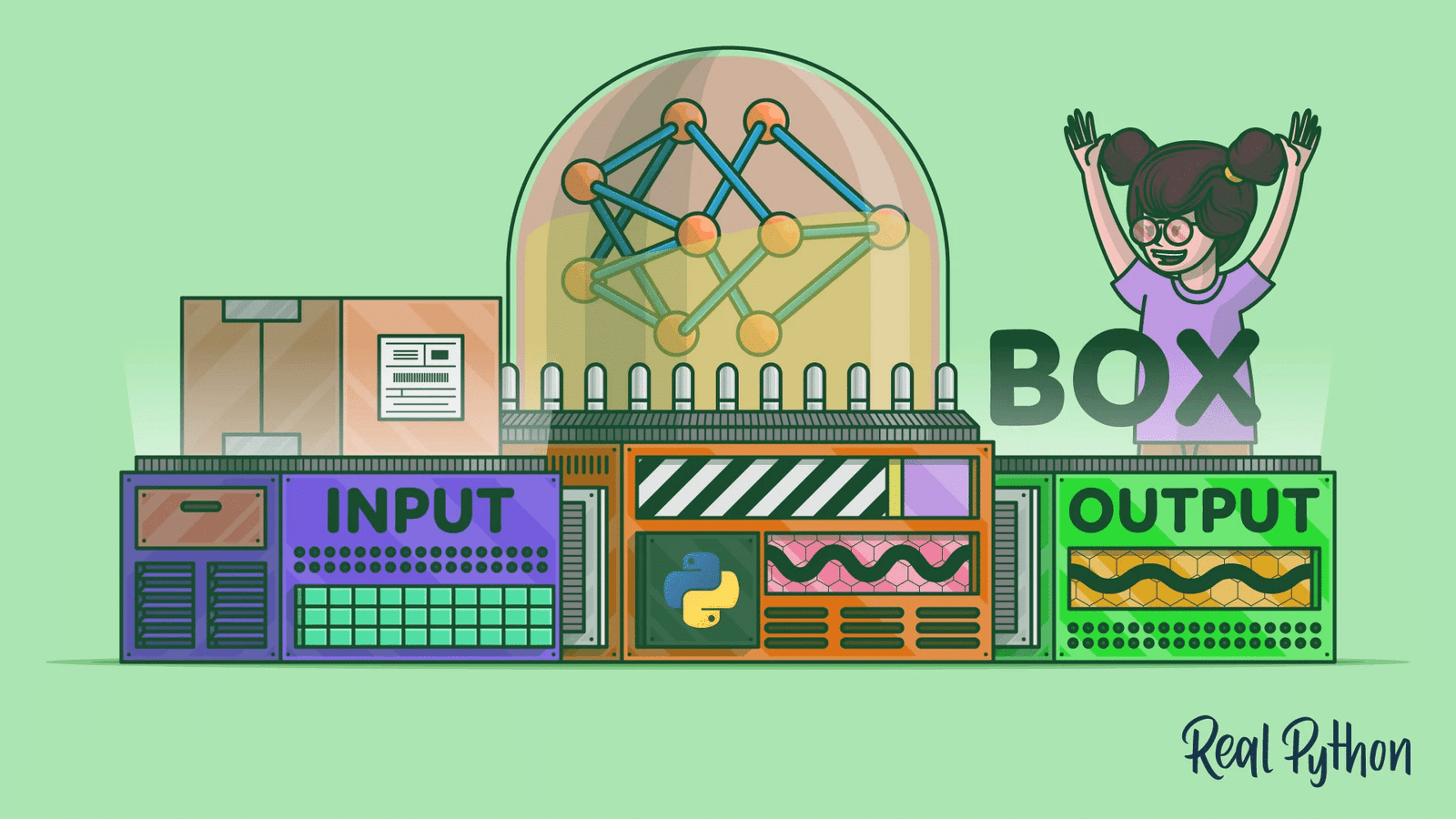
Source: https://realpython.com/python-ai-neural-network/
Neural networks, a cornerstone of modern artificial intelligence (AI), are designed to simulate the way human brains operate, allowing machines to think and learn from experience. At its core, a neural network in Python AI processes information in a manner similar to our brain’s neuron connections, which is why it’s often described as “brain-inspired” systems.
How Neural Networks Mimic the Human Brain:
- Neurons and Nodes: Just as the human brain consists of neurons, neural networks are made up of nodes. These nodes are interconnected in layers, which include an input layer, one or more hidden layers, and an output layer. Information flows through these layers in a structured pathway.
- Weights and Signals: In both human brains and neural networks, connections between neurons (or nodes) have weights that adjust as learning occurs, influencing the strength of the signal that passes between nodes. During the learning process, these weights are optimized so that the neural network can make accurate predictions or decisions.
Learning Process:
- Forward Propagation: Data is entered at the input layer and moves through the network to the output. Each node assigns a weight to its input, which helps to determine how much influence the input will have on the output.
- Backpropagation: This is where the neural network learns from errors. If the output from the network does not match the intended output, the system adjusts the weights of the nodes. By doing this repeatedly on thousands or millions of data samples, the neural network refines its predictions or decisions.
Python and Neural Networks
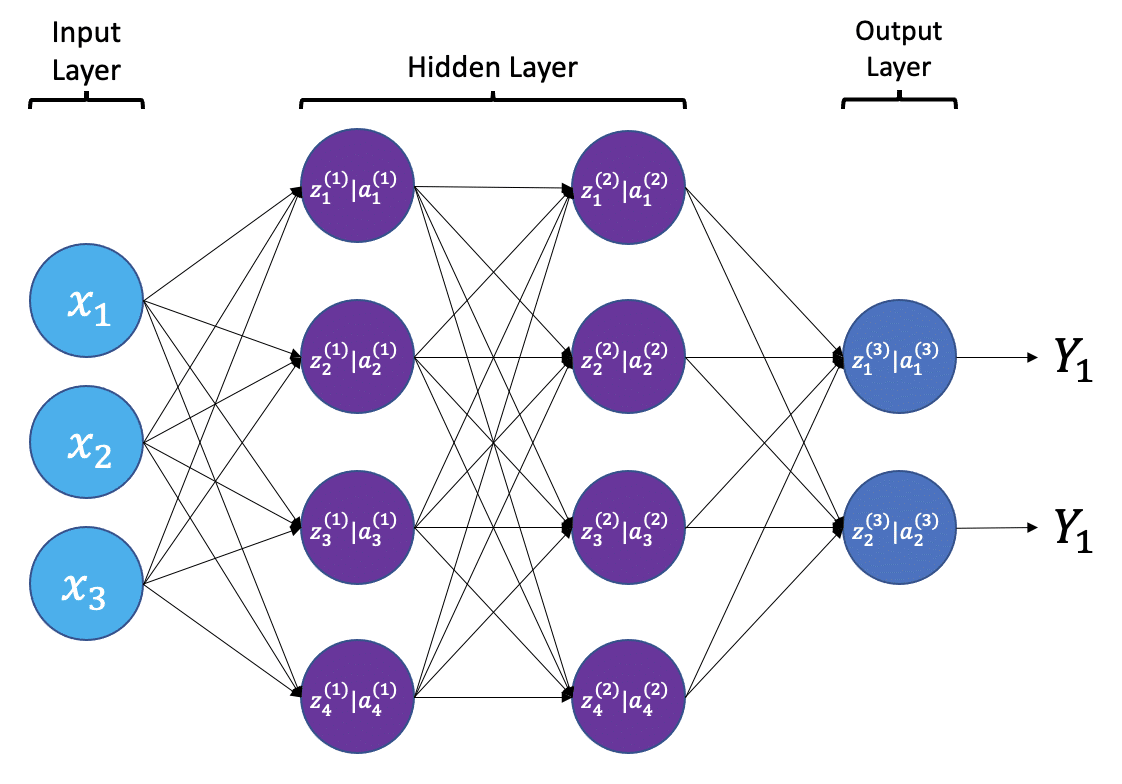
Source: https://carpentries-incubator.github.io/machine-learning-neural-python/04-create_net/index.html
The simplicity and power of Python make it accessible to both beginners and experts, facilitating the development of sophisticated AI applications.
Popular Python Libraries for Neural Networks:
TensorFlow
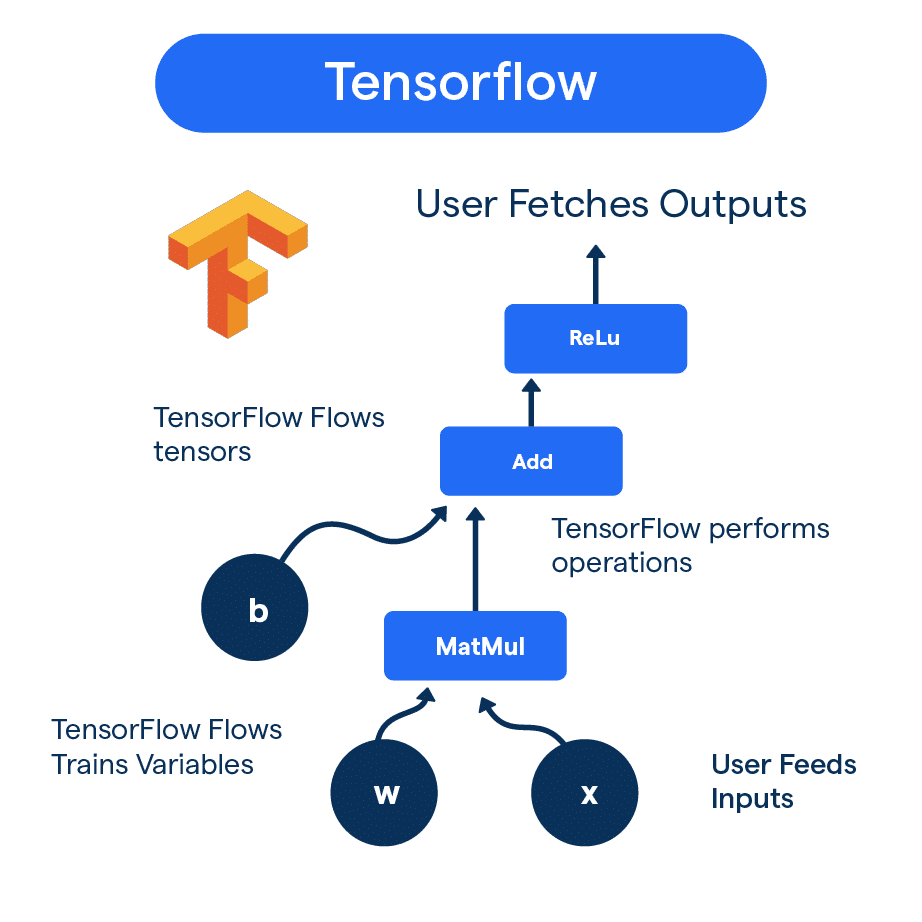
Source: https://botpenguin.com/glossary/tensorflow
Developed by Google, TensorFlow is widely used for machine learning and deep learning applications. It offers comprehensive tools and libraries that allow python developers to create complex neural network architectures effortlessly.
Keras
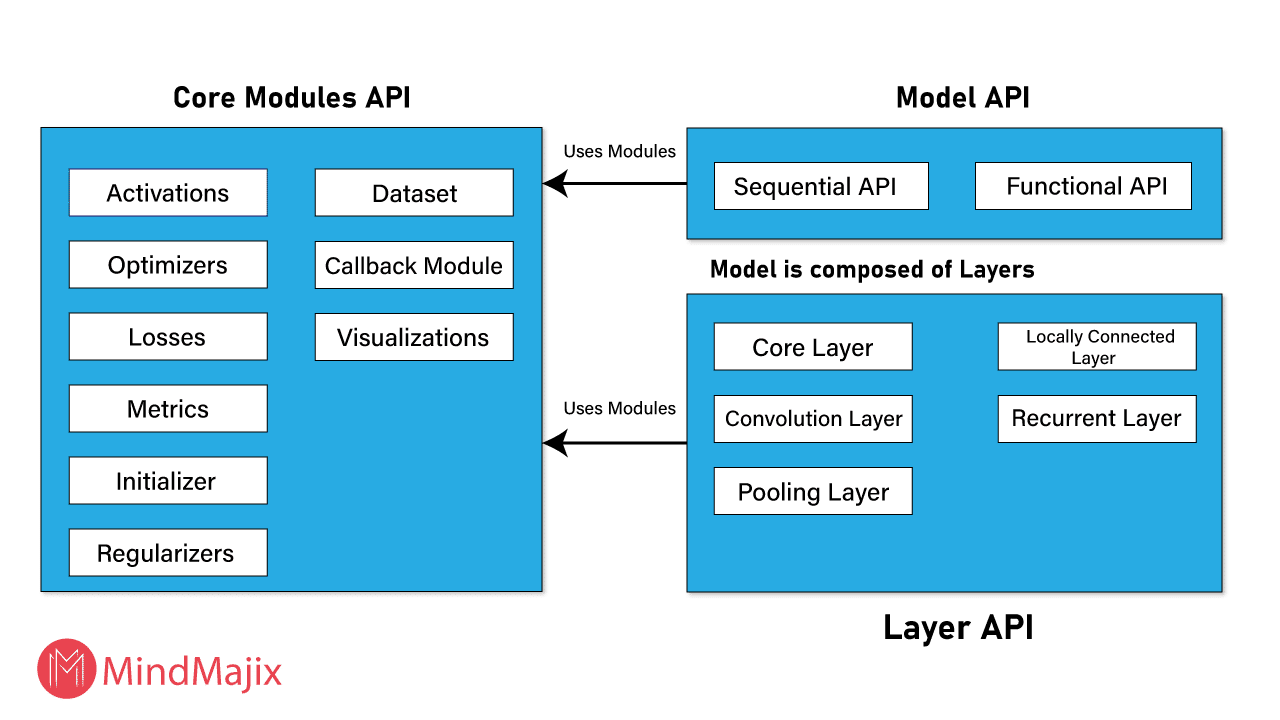
Source: https://mindmajix.com/keras-tutorial
Known for its user-friendliness, Keras operates on top of TensorFlow. It simplifies the creation of neural networks with its high-level building blocks specifically designed for building and training models. Keras is a favorite among developers for its ease of use in prototyping and experimentation.
PyTorch
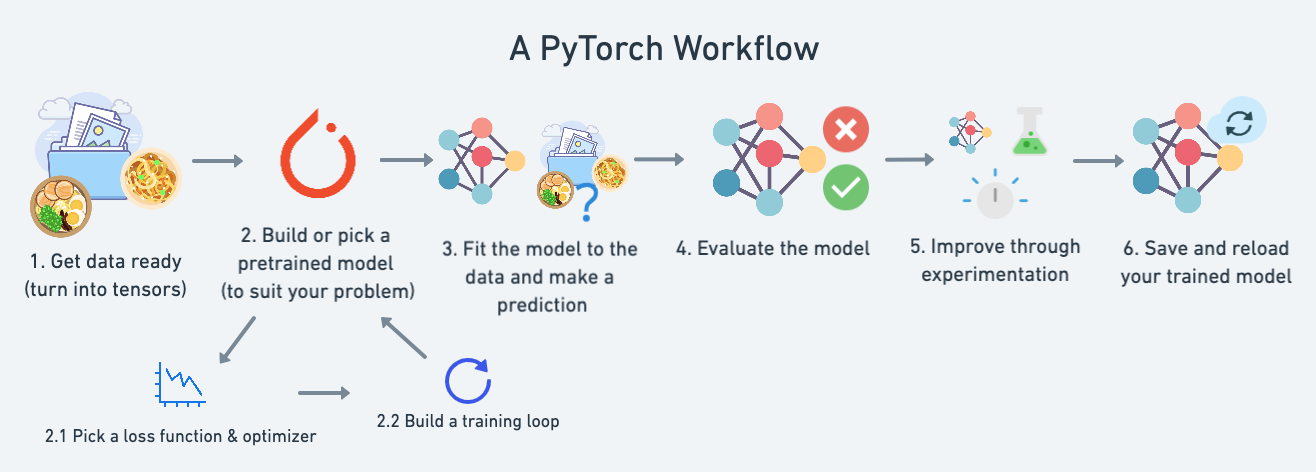
Source: https://www.learnpytorch.io/01_pytorch_workflow/
Developed by Facebook’s AI Research lab, PyTorch is celebrated for its flexibility and dynamic computing capabilities, which make it particularly well-suited for research and prototyping.
Open AI Python
OpenAI, an organization at the forefront of artificial intelligence research, has developed several Python libraries that are transforming the way developers and businesses utilize AI. These tools are designed to make powerful AI functionalities accessible to everyone, from seasoned programmers to those just starting out with coding.
One of the most famous contributions from OpenAI is the GPT (Generative Pre-trained Transformer) series, particularly GPT-3, which has been integrated into Python environments through APIs. This model can understand and generate human-like text, making it a powerful tool for a wide range of applications.
Real-World Examples:
- Healthcare: Python-based neural networks are used to analyze medical images, helping in the early diagnosis of diseases such as cancer.
- Finance: In the financial sector, Python neural networks predict stock market trends and customer creditworthiness, aiding in decision-making and risk management.
Top Python AI and ML libraries
Library | Best for | Description |
Scikit-learn | Basic ML algorithms like clustering, regression, classification | Provides a range of supervised and unsupervised learning algorithms. |
Keras | Deep learning, fast calculations and prototyping | Enables easy and fast prototyping as well as advanced deep learning techniques. |
Pandas | High-level data structures and analysis | Offers data manipulation capabilities for easy data cleaning and analysis. |
Caffe | Deep learning, may process 60+ million images per day | Specialized in processing images for deep learning applications. |
TensorFlow | Deep learning, managing data-loaded neural networks | Facilitates the creation, training, and deployment of scalable deep learning models. |
Matplotlib | Creating 2D plots, histograms, and other visualizations | Useful for creating static, interactive, and animated visualizations in Python. |
NLTK | Natural language processing and computational linguistics | Includes tools for speech processing and classification. |
PyBrain | Developing neural networks and reinforcement learning | Focuses on algorithms for neural networks, including unsupervised and reinforcement learning. |
StatsModels | Building statistical algorithms and exploring data | Useful for econometric and statistical modeling and tests. |
How Python Neural Networks are Empowering Businesses?
Python’s implementation of neural networks is changing how businesses operate across various sectors, enhancing efficiency, personalizing customer interactions, and driving innovation. By harnessing the power of neural networks, businesses can analyze large volumes of data to make informed decisions quickly and effectively.
Personalized Customer Experiences
- Companies use neural networks to analyze customer behavior and preferences, allowing them to offer personalized recommendations and services. For instance, e-commerce platforms use these insights to suggest products that you are more likely to purchase, enhancing your shopping experience.
Operational Efficiency
- Automated Processes: Many businesses automate routine tasks such as data entry and customer service inquiries using neural networks, freeing up human employees to focus on more strategic activities.
- Predictive Maintenance Manufacturing companies employ neural networks to predict when machines are likely to fail or need maintenance, significantly reducing downtime and maintenance costs.
Financial Analysis
- Neural networks analyze market data to forecast stock trends, manage risks, and provide insights that help financial analysts make faster, more accurate decisions.
Fraud Detection
- Financial institutions implement neural networks to detect unusual patterns that may indicate fraudulent activity. This real-time analysis enables quick action, reducing potential losses.
Conclusion
By automating complex processes, enhancing decision-making, and personalizing customer interactions, Python AI code is not just improving efficiencies but is also reshaping business models. Retail giants are predicting purchasing behaviors and personalizing shopping experiences like never before, while financial institutions leverage these tools for real-time fraud detection and risk assessment, safeguarding both their interests and those of their customers.
Imagine a future where businesses not only respond to current customer needs but anticipate future trends with remarkable accuracy. What new innovations could emerge when companies harness the full potential of Python AI? The possibilities are boundless, and the journey there is just as intriguing as the destination itself. Stay tuned, as the best of Python AI is yet to unfold.
SHARE THIS POST












